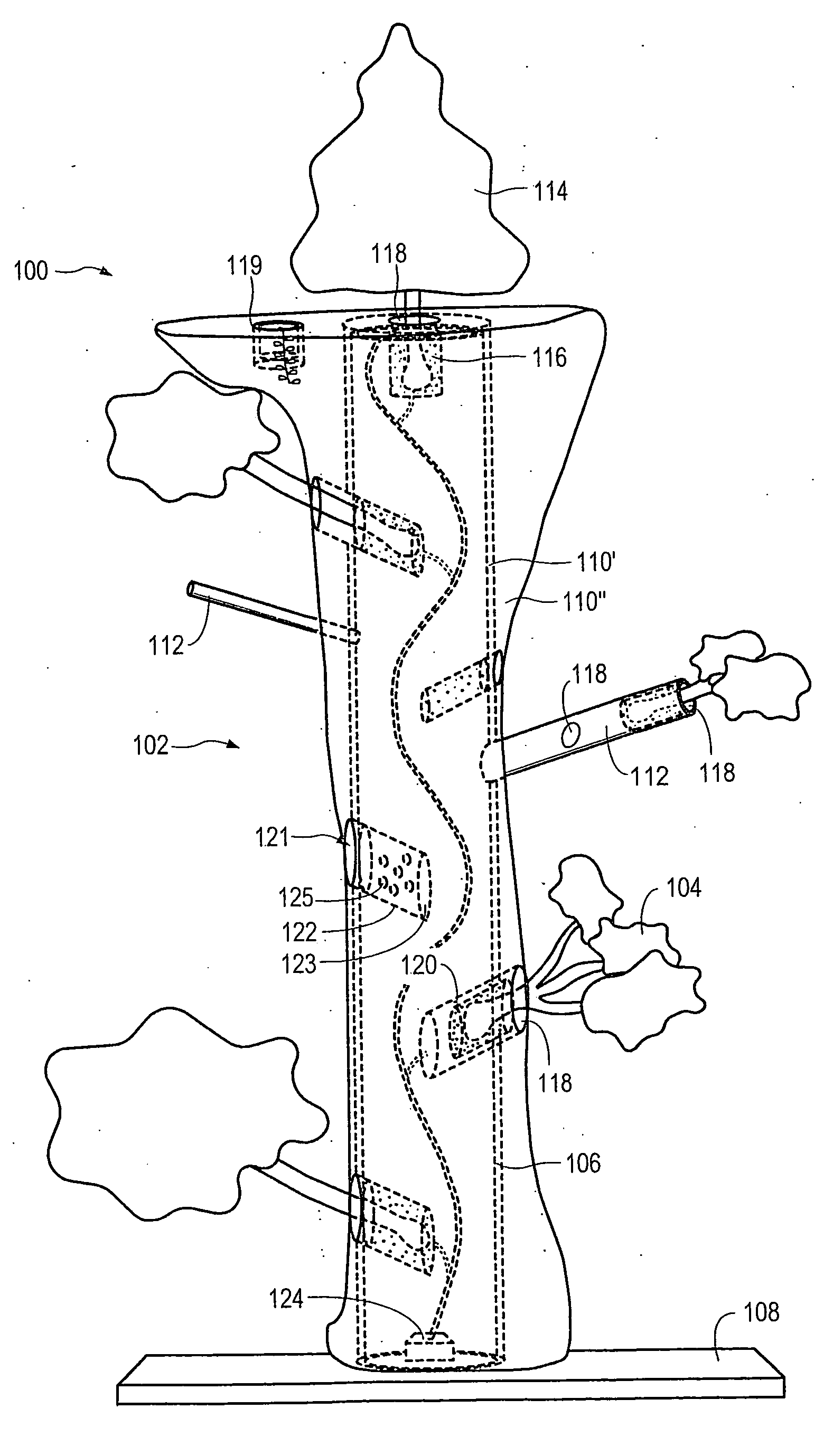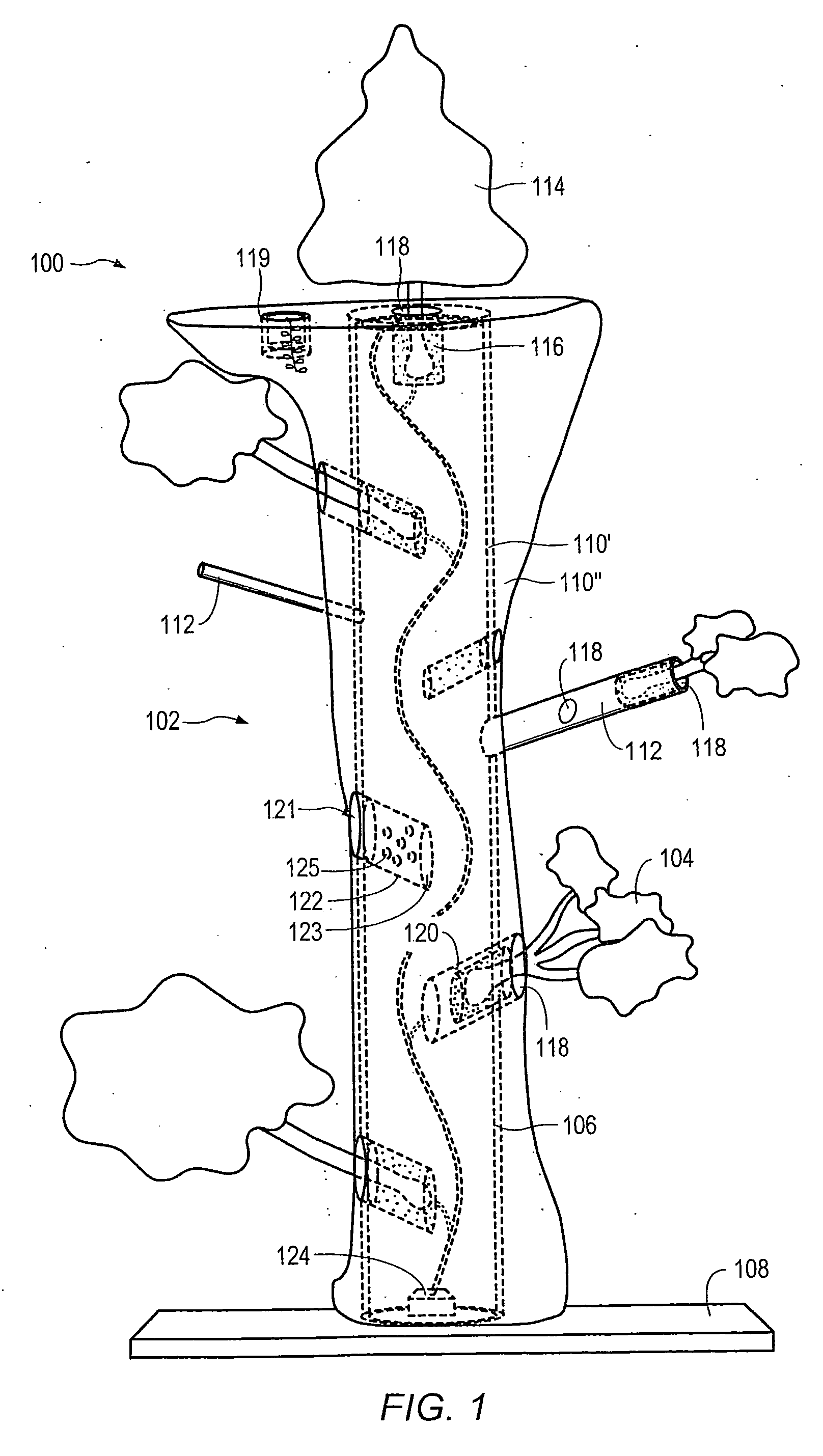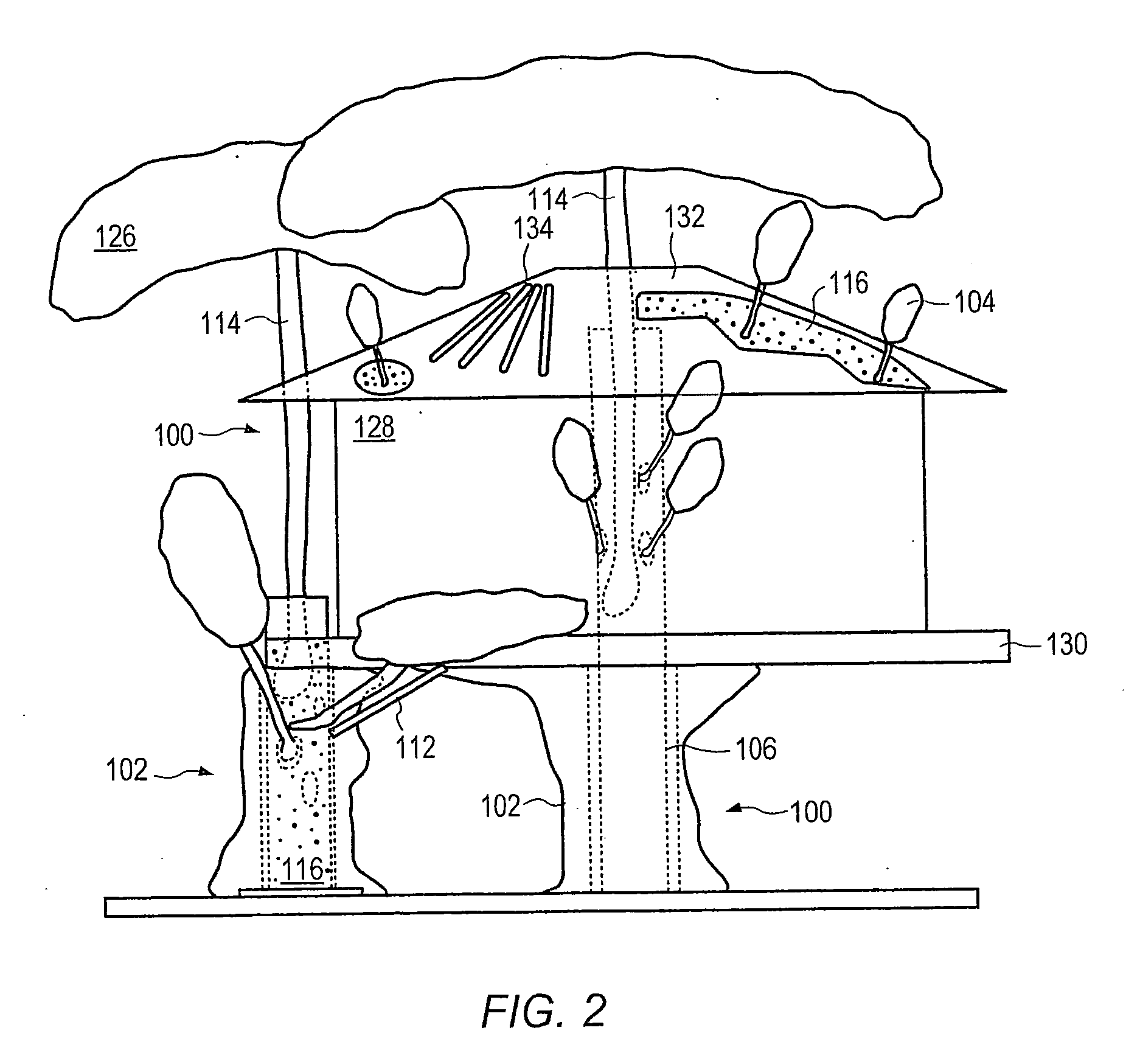Composite tree
a composite tree and tree technology, applied in amusements, applications, manufacturing tools, etc., can solve the problems of limited throughput capacity, long queue line waits, and short duration of traditional downhill water rides
- Summary
- Abstract
- Description
- Claims
- Application Information
AI Technical Summary
Benefits of technology
Problems solved by technology
Method used
Image
Examples
Embodiment Construction
[0084] It is to be understood the present invention is not limited to particular devices or systems, which may, of course, vary. It is also to be understood that the terminology used herein is for the purpose of describing particular embodiments only, and is not intended to be limiting. As used in this specification and the appended claims, the singular forms “a”, “an”, and “the” include singular and plural referents unless the content clearly dictates otherwise. Thus, for example, reference to “a linker” includes one or more linkers.
Definitions
[0085] Unless defined otherwise, all technical and scientific terms used herein have the same meaning as commonly understood by one of ordinary skill in the art.
[0086] The terms “base” or “base element” as used herein generally refers to any element that provides a base for one or more other elements.
[0087] The term “branch” or “branch portion” as used herein generally refers to any extensions from a base, a main stem of a tree, or a lim...
PUM
 Login to View More
Login to View More Abstract
Description
Claims
Application Information
 Login to View More
Login to View More - R&D
- Intellectual Property
- Life Sciences
- Materials
- Tech Scout
- Unparalleled Data Quality
- Higher Quality Content
- 60% Fewer Hallucinations
Browse by: Latest US Patents, China's latest patents, Technical Efficacy Thesaurus, Application Domain, Technology Topic, Popular Technical Reports.
© 2025 PatSnap. All rights reserved.Legal|Privacy policy|Modern Slavery Act Transparency Statement|Sitemap|About US| Contact US: help@patsnap.com



